Rowing Machine vs Treadmill – 5 Main Differences To Consider
Author:
Unlock your full potential by engaging with our experts and community! Have questions about your fitness journey or looking for expert advice on weightlifting techniques? Don’t hesitate — leave a comment below and Ihor Shymechko will provide a personalized answer and insights to help you reach your goals.
Torokhtiy is reader-supported. Some links are affiliate links, and we may earn a commission at no extra cost to you. See our disclosure page for details.
So much gym equipment, so little time… How can you choose from all of them? You want to try out a treadmill, but that rowing machine also looks good. Rowing machine vs treadmill – what would be better?
Believe me when I say that I would just love to give you an answer right away; “Choose this, and you’re good to go.” Wouldn’t that be awesome? Well, it doesn’t work like that, and that’s actually a good thing.
Each piece of gym equipment excels at something, and they’re all someone’s favorite. What you should choose will depend on your priorities, but the good news is, I have a lot of information on both of them that I’m sure will help you decide. Is a rowing machine better than a treadmill?
How to choose between rowing machine vs treadmill? A rowing machine is great for a full-body workout, and it is low-impact (great for those with joint pain). The treadmill, on the other hand, focuses more on your lower body and can be high-impact (less friendly on your joints). Both yield high numbers in the calorie burn section but are mostly affected by the intensity and duration of the workout.
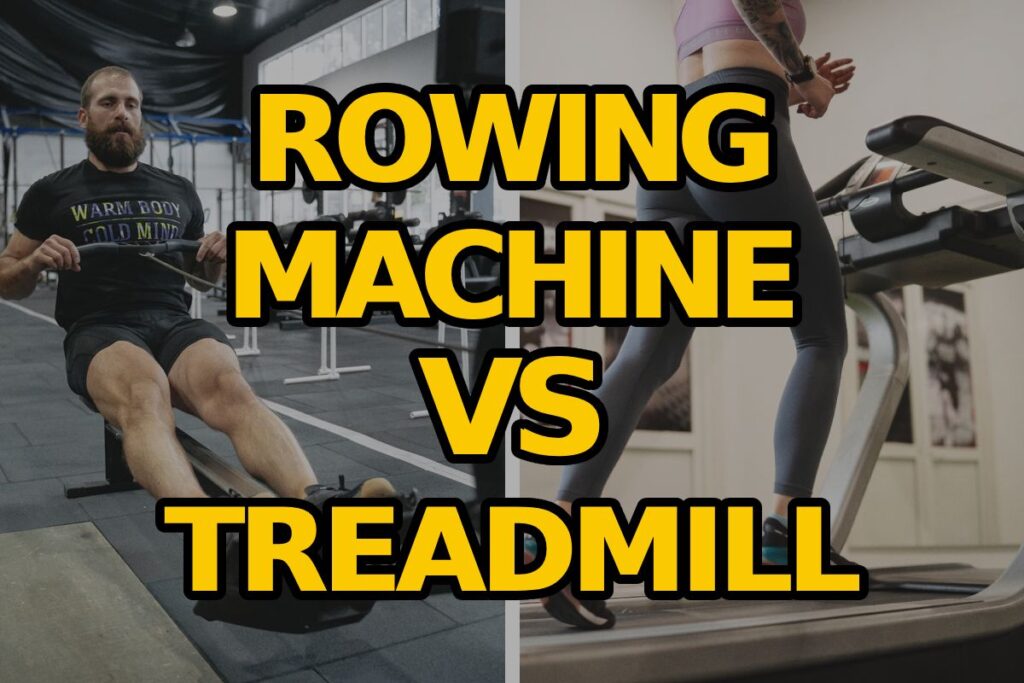
What is a rowing machine?
If you want to make a choice, then you need to know everything there is to know about both options. And you’re in the right place because I can help with that.
A rowing machine (which you may have heard being called an ergometer) is essentially a machine designed to simulate the motion of rowing on a boat. It has a sliding seat, a handlebar, and a resistance mechanism (often magnetic). It will engage your legs, core, and upper body, so if you want a full-body workout, you can’t go wrong with a rowing machine.
Believe it or not, they go way back. In the early 20th century, they were used as training tools for sailors and rowers. As time passed, they became more popular and went from being used only by professionals to being used in gyms and home gyms. Today, everybody loves them because they’re so efficient.
One of the best things about a rowing machine is that it gives you low-impact workouts. This means that your joints, hips, and ankles don’t go through as much stress as they do with some other equipment. They’re even suitable for people recovering from injuries.
Rowing is also amazing for calorie burning (I’m sure you were all waiting for this one!). You’ll notice that you’ll feel the workout in all of your large muscle groups, which need a lot of energy. Combining rowing machine workouts with a healthy diet can help you lose and maintain weight.
Beyond their amazing calorie-torching capabilities, rowing machines are excellent for cardio workouts. They also contribute to overall heart health. The workout will elevate your heart rate, which will do wonders for your circulation and endurance.
If you want a stronger core, rowing has you covered! This is another thing a rowing machine is good for. As you push and pull the handlebars, the muscles in your core contract to keep you stable – this, in turn, makes them stronger.
You may be a beginner thinking that starting your fitness journey with rowing is a bit much, but you couldn’t be more wrong. Most rowing machines have adjustable resistance (water/hydraulic models and some basic models don’t offer resistance adjustability), so you can set it to whatever you like. Rowing is also known to have a calming, almost meditative effect because the motion itself is repetitive and needs you to focus on it.
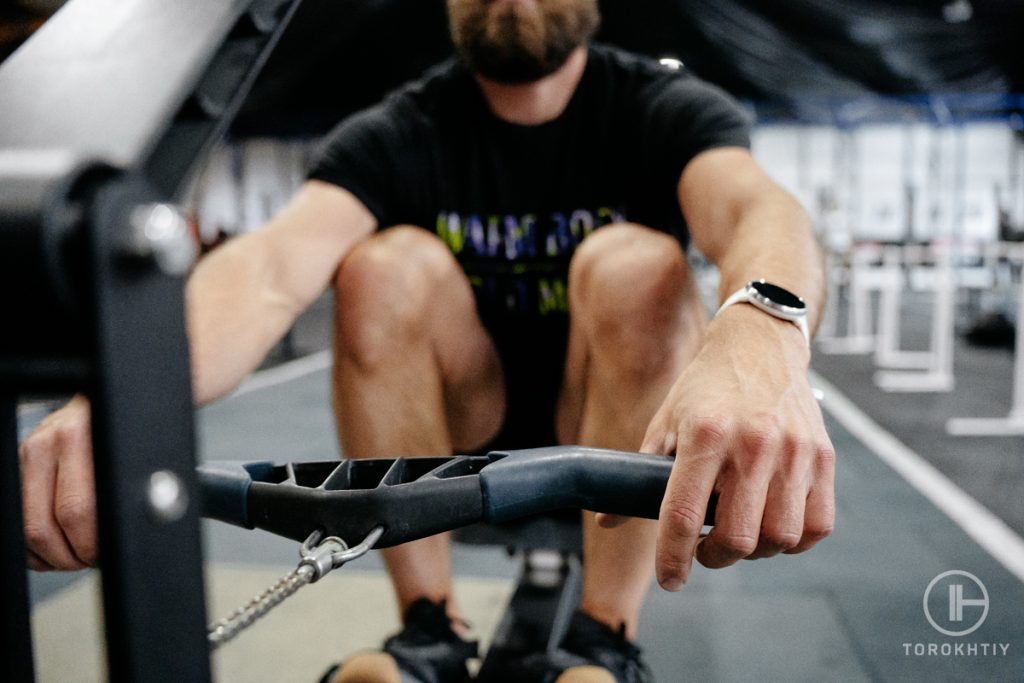
What Is a Treadmill?
Ah, the treadmill… Probably the most well-known piece of gym equipment. For most people, when someone says the word “gym”, a picture of a treadmill pops into their head.
In short – a treadmill is a machine made to simulate the movement of walking, jogging, or running. It has a moving belt you can walk or run on while the machine stays put.
You’ll see treadmills in almost every gym and fitness center, and you’ll usually also see that at least half are occupied. People love them because they’re very convenient and provide super-effective cardio workouts.
Your fitness level plays absolutely no part in being able to use it. If you’re a beginner, you can start with walking or light jogging. On the other hand, if you’re experienced, you can crank up the incline and speed and… Well, have your butt kicked, to be honest.
Treadmills are not as low impact as rowing machines simply because the workout is not as joint-friendly. The impact on your joints is reduced due to the cushioned surface you are running or walking on. This is in contrast to working out outside on concrete or asphalt.
What’s so great about treadmills is that they allow you to control the intensity of your workout (well, most of them anyway) by adjusting the speed and incline. You can do anything from a light walk to an intense running session that will burn calories and improve fitness.
When it comes to home gyms, the treadmill is most likely what you’ll see in all of them. And it makes sense because why should your workout depend on the weather when you can just go running at home?
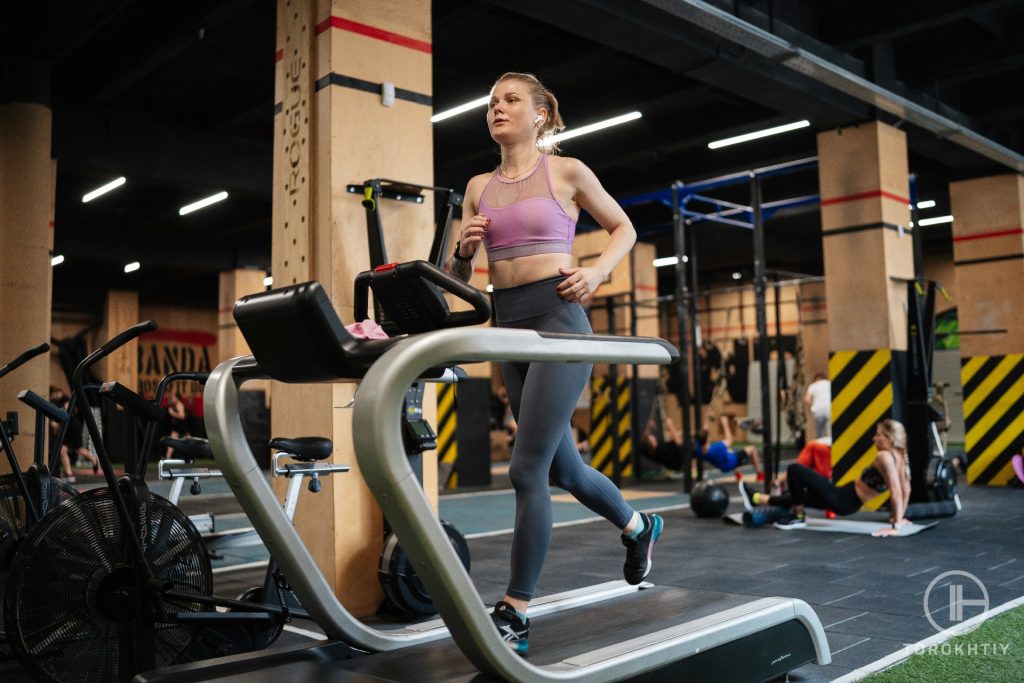
Rowing Machine vs Treadmill: 5 Differences
If you want to straight-up compare the two, then here’s a quick table to check the main differences. Below the table, I’ll go deeper into the specifics.
| Criteria | Rowing Machine | Treadmill |
|---|---|---|
| Type of movement | Pulling | Walking or running |
| Impact on Joints | Low-impact | Can be high-impact |
| Cardiovascular Benefits | Elevates heart rate, improves lung capacity, increases stamina and endurance | Improves heart health, increases stamina and endurance |
| Muscle Engagement | Upper and lower body | Mostly lower body |
| Core Strengthening | Significant results | Not as effective for the core as rowing |
1. Type of Movement
Rowing is a pulling motion that engages your entire body, which is why the workout is so effective.
A treadmill offers options between running or walking, which engages mostly your lower body muscles.
2. Impact on Joints
Rowing puts minimal stress on your joints and is very suitable for people with joint issues or injuries.
Running, however, can be high-impact and even lead to joint strain. Walking is less stressful for your joints, but the rowing machine is the clear winner in this category.
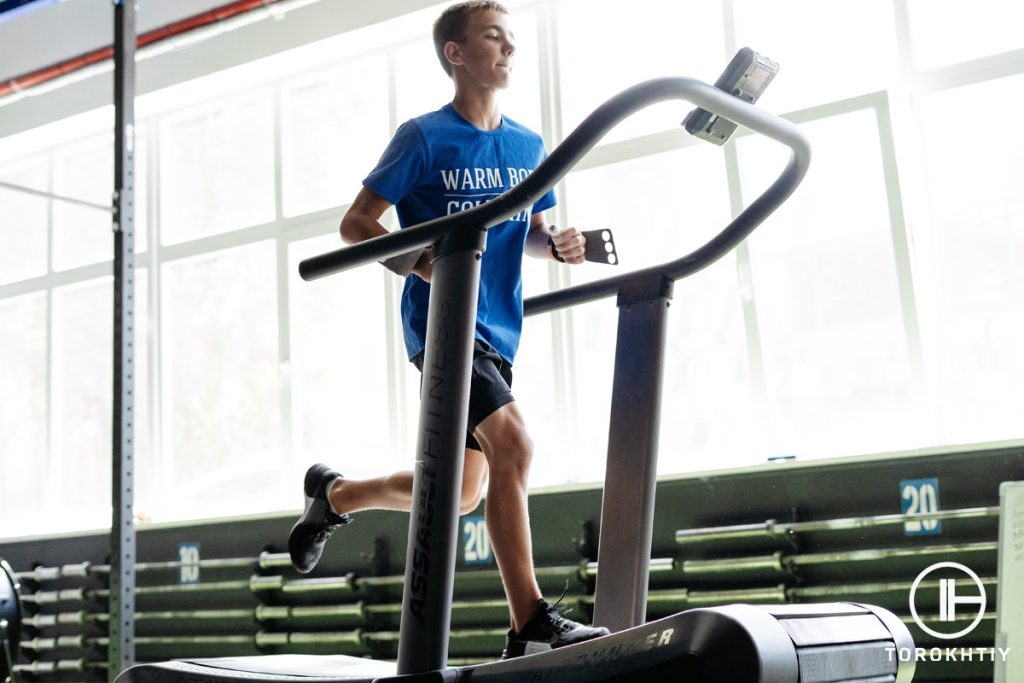
3. Cardiovascular Benefits
Rowing is great cardio; it elevates your heart rate and improves your lung capacity. It also engages large muscle groups simultaneously, which is exactly what you want if you want to lose (or maintain) weight.
Treadmills also have a lot of cardiovascular benefits. It increases stamina and improves your heart health.
4. Calorie Burning
Both a treadmill and the rowing machine produce high numbers when it comes to calorie burning. Rowing might produce slightly more favorable numbers because it engages more muscle groups, having them work harder and thus burning more calories. Both types of machines increase your overall metabolic rate (your body’s calorie-burning rate).
5. Muscle Engagement
A rowing machine engages more muscle groups than a treadmill because you’re using your whole body to complete the workout. A treadmill mostly impacts your lower body. But then again, the treadmill will work your lower body much harder. For example – your calves will be impacted much harder by using a treadmill compared to using a rower.
So, treadmill or rowing machine, which is the winner in this category? The rower on paper, but it depends on what’s more important to you.
6. Core Strengthening
In this category, the treadmill stands no chance against the rowing machine. With the treadmill, you’ll be affecting core muscles such as your abs, and obliques, and lower back(especially if you maintain a good posture and balance during running/jogging/walking). But in rowing, all the above-mentioned core muscles are affected much more severely during the compound motion.
So while both machines engage the core, rowing does it more intensely.
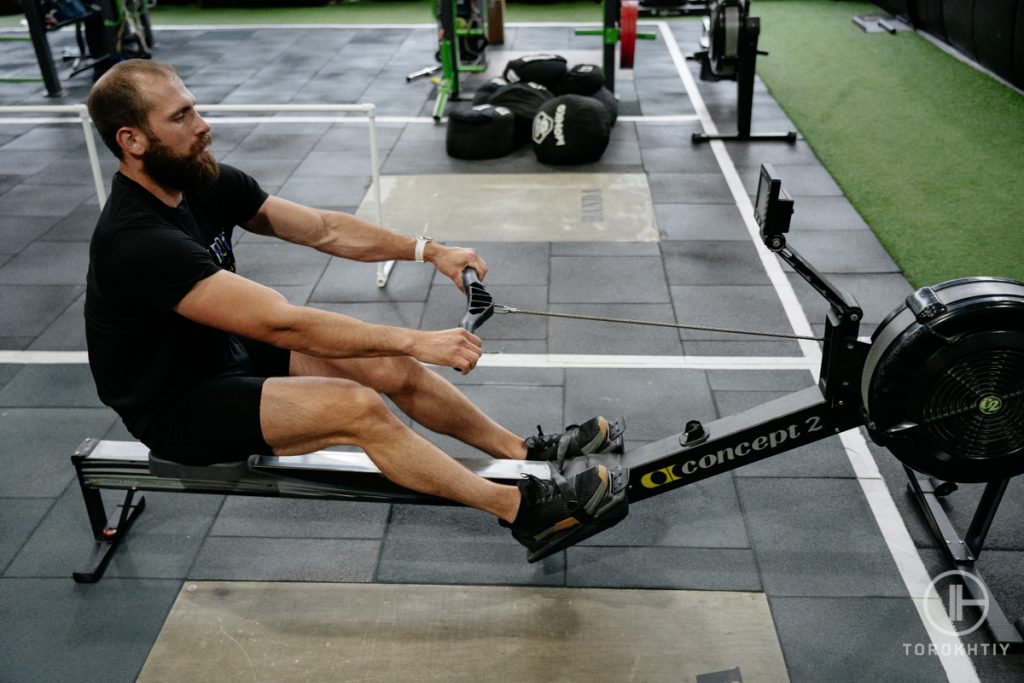
Rowing Machine or Treadmill: A Summary
If you’re still undecided and don’t exactly know what to choose, I’ll list some pros and cons for each to help you.
1. Rowing Machine
What everyone notices right away is how rowing engages your entire body. In my opinion, that’s the rowing machine’s biggest pro. You’re working your upper and lower body at the same time, and if your lifestyle is busy, this type of convenience is irreplaceable.
Another thing to mention – joints love rowing. The motion is smooth, there’s no pounding on a hard surface, and you’re still getting a workout. The smooth, repetitive motion also has mental health benefits.
If you live in an apartment or have household members, you’ll be pleased to know that rowing machines are generally quieter than treadmills. Well generally. Both machines produce noise, especially depending on the model and the overall build quality. But if you compare both – rowers generally produce much less noise (you might disagree with this if you’re using an air rower, or a water rower with those “slush, slush, slush sounds).
There is a bit of a learning curve with rowing machines. The machine and the movement can take a while to get used to.
They also typically take up more space because they’re usually quite longer than treadmills, so if you’re limited on space you might find it hard to place them. They are much thinner than treadmills, but the extra length can be an issue.
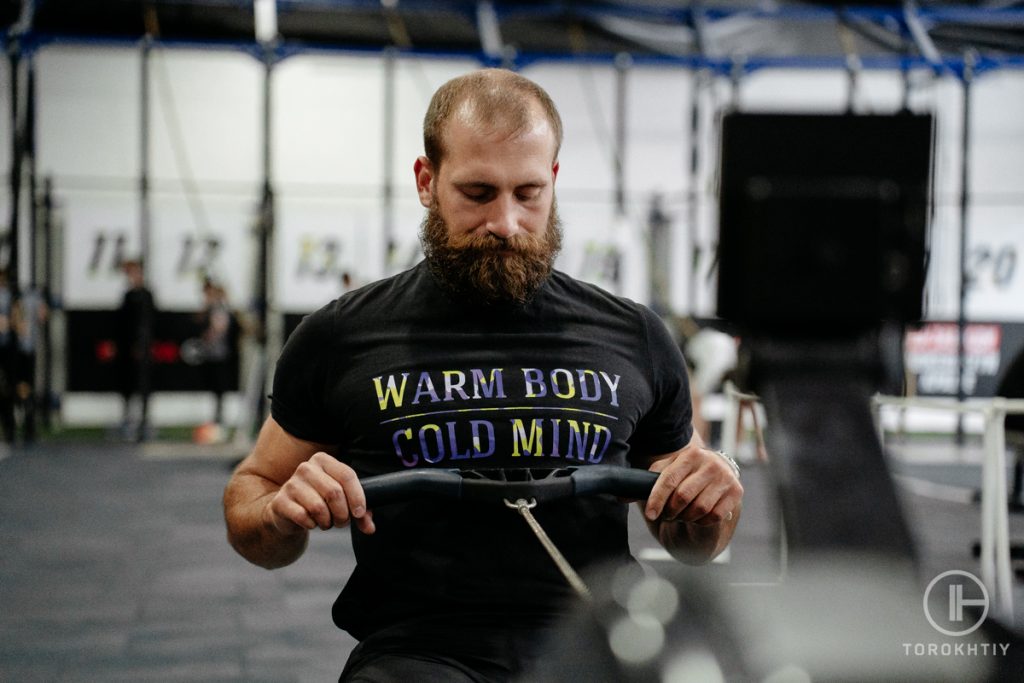
2. Treadmill
This brings me to my next point – the treadmill. If you know how to walk and run, using a treadmill will feel natural, even if you’ve never tried it before. Unlike the rowing machine, there’s no need for a learning period.
Running and walking improves heart health and joint flexibility. And speaking of joints, a workout on the treadmill can have a very high impact, even with a cushioned surface.
Running and walking are great for weight loss and especially weight management. But then again – so is rowing. So when it comes to weight management, you have to pick your favorite.
If you’re worried about your upper body while using a treadmill, you can add some upper body workouts along with your running and walking routine.
It can also be a bit noisy, so those late-night or early-morning workouts may not be an option if there’s a chance you’ll disturb someone around you.
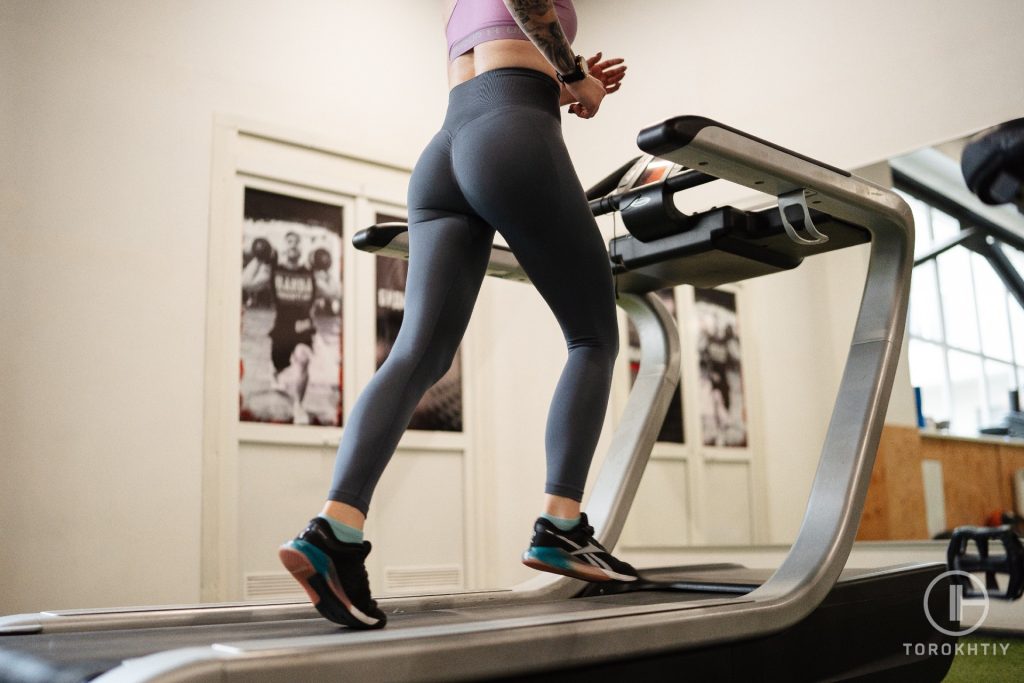
Rowing Machine vs Treadmill: When to Use Each?
Right now, you may be a bit overwhelmed with information and comparisons. But that’s okay because I have tips on deciding plus when you should use each machine.
Rowing gives you a full body workout while putting as little stress as possible on your joints – that is its purpose. I would highly suggest it if you’re dealing with joint issues or recovering from injuries.
It’s also a great addition if you already have a set fitness routine. It works great to keep things from getting boring because rowing is not a workout many people often do.
A treadmill is basically a platform for running, walking, and jogging. It will give you a controlled environment (as opposed to working out outside). Even though its focus is mostly on your lower body, it’s still fabulous for calorie burning and cardiovascular health. So to summarize, it is better to use a treadmill if you like linear locomotion, or are training for a running event as it provides training that specifically mimics the actual event. Also, if you want to focus more on your lower body, you should opt for a treadmill. A rowing machine does engage lower-body muscles, but not at the same intensity level.
Also, keep in mind that on most rowing machines you’ll have only one way to increase the workout intensity. While on a treadmill you can have two: speed and incline (not all rowers offer resistance adjustability, and not all treadmills have incline adjustability).
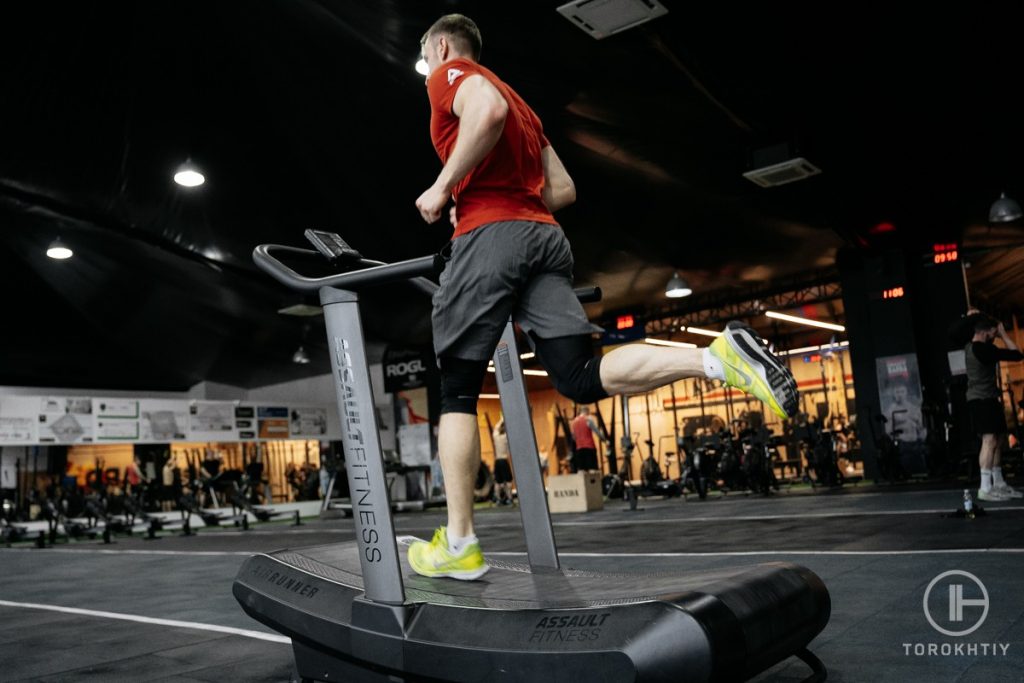
The Rowing Machine We Recommend – Black Concept 2 Rowerg Rower
Although I always worry a little about setting machines up (especially if they’re bigger), this one was surprisingly easy to put together.
Everything was done in 20 minutes, and the rower was ready to use. It’s compact for what it is, and the built-in wheels make it easy to move around.
Its dimensions are 96’’ L x 24’’ W. The height is 14’’/20’’ depending on your choice of standard legs/tall legs. The weight is also different depending on the same choice – 57 lb/ 68 lb.
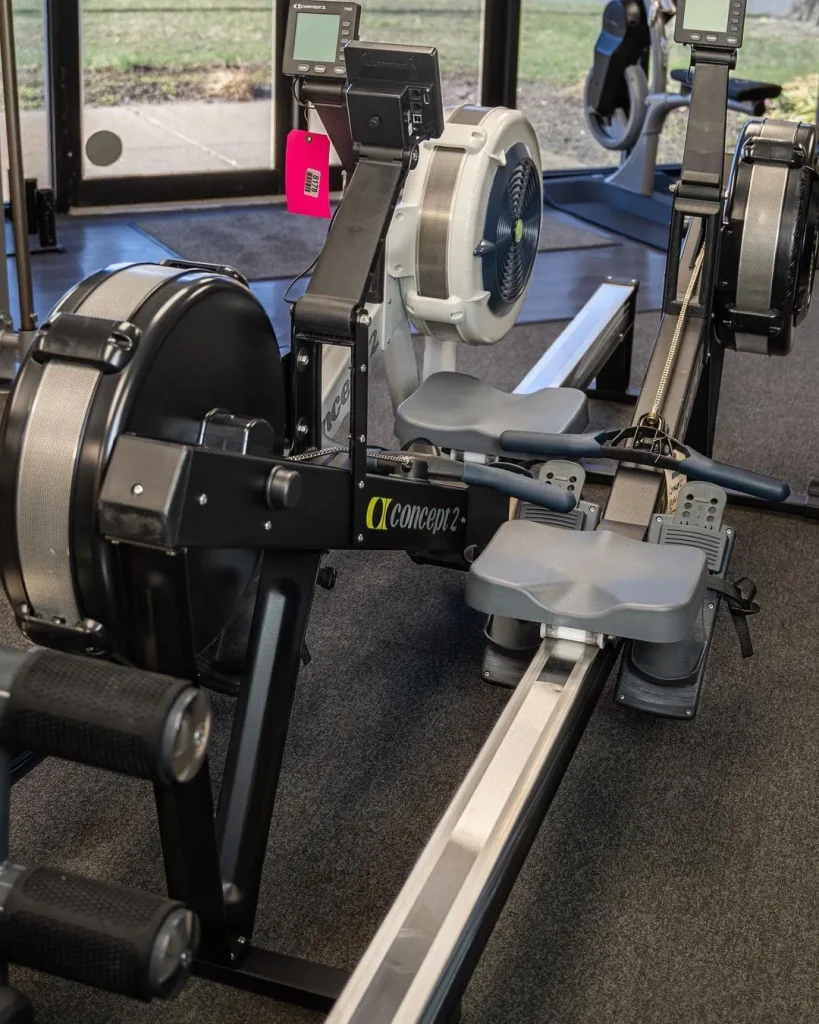
The general footprint is 8’ by 2’ and its maximum weight capacity is 500 lbs.
The monitor shows all the necessary workout data, like distance covered, speed, and burned calories.
The workout itself is seamless and smooth. The flywheel is super quiet, and adjusting the resistance is easy. It provided you with 10 levels of resistance.
It would be perfect if it wasn’t for the higher price point. This one will make a dent in your wallet, but in return, you’ll get the best rowing experience a machine can offer. And to top it off you also get a great warranty package – frame (5-year limited), parts (2-year limited), which is a lot!
Pros:
- Easy to set up
- Quiet when in use
- Performance monitor provides all important data
- Highly durable
Cons:
- Pricey
The Treadmill We Recommend – Nordictrack Exp 7I
Every gym needs a treadmill, and your home gym is no exception; the EXP 7i will be a fantastic addition.
It’s quiet and foldable, so you can easily stick it in a closet after you’re done if you don’t want it to take up space while you’re not using it.
The treadmill dimensions are 70.8” L x 34.9” W x 59.7” H footprint with a 20” x 55” commercial tread belt.
It can handle speeds from 0-10 mph thanks to a 2.6 HP motor and offers an adjustable incline of up to 12%. The max user capacity is 300 lb.
If you have some experience with treadmills, you’ll notice the cushioning on this one is a bit softer than what you’ll find on most other treadmills. This is great for beginners and anyone recovering from injuries.
The slightly small 7’’ screen has iFit enabled which will give you thousands of workouts, so you can pick and choose what you like.
You’ll also enjoy a great warranty (10-year frame, 2-year parts, 1-year labor).
Your home gym would be lucky to have this treadmill, and I’m sure you’d really enjoy it.
Pros:
- Easy to store away
- Compact
- Great value for money
Cons:
- The screen is small
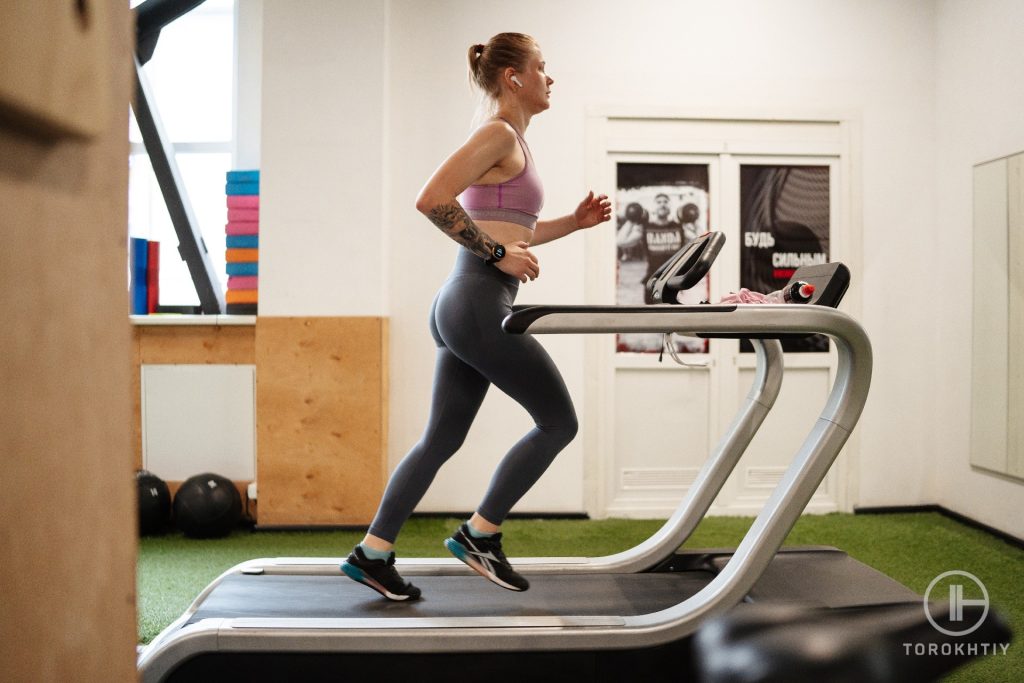
FAQ
Is a Rowing Machine Better Than a Treadmill?
Whether a rowing machine or treadmill is better depends on you; if you want a full-body workout, go for a rowing machine. Rowers are also usually low-impact compared to treadmills. Treadmills work the lower body. The overall benefits in terms of calorie burn, and cardiovascular health are similar, so it’s up to you to decide which machine you like more.
Can You Lose Belly Fat on a Rowing Machine?
Yes, you can lose belly fat on a rowing machine. If you combine rowing with a healthy diet, you can lose and manage weight with it.
Is the Rowing Machine as Good as Running?
Rowing and running have different benefits. Both are great, but the choice is on you. Both rowing and running are great for calorie burning and cardiovascular health, but while rowing is great for joints and will give you a full-body workout, running can be high-impact and will work your lower body. Running will also work your lower body with more intensity than rowing will.
Conclusion
Rower vs treadmill, running or rowing… You should have a pretty good idea of what would work better for you now. The good news is that they’ll both burn calories and give you a good workout. Many people compare the benefits of a rowing machine vs. a treadmill for weight loss. The truth is, both will help you lose weight if you watch what you eat and continue working out.
What do you think, which one is the winner? Is it better to use a treadmill or rowing machine for belly fat reduction? Do you prefer running or rowing, and why?
Don’t be shy! Let’s start a discussion!
Running out! (Or maybe rowing out… I haven’t decided yet)
Also read:
- Budget Rowing Machines vs Expensive
- How Many Calories Does Rowing Burn
- Water Rower vs Magnetic Rower
- Rowing Machine Benefits
References:
- How to use a rowing machine to lose weight // LiveScience: https://www.livescience.com/how-to-use-rowing-machine-lose-weight
- The physiology of rowing with perspective on training and health // NCBI: https://pubmed.ncbi.nlm.nih.gov/32627051/
- Ergometer rowing to mitigate spinal pain in neurosurgeons // ScienceDirect: https://www.sciencedirect.com/science/article/pii/S2214751921002061
- Is long-distance running good for the heart? // Heart: https://www.heart.org/en/news/2019/03/01/is-long-distance-running-good-for-the-heart
- What Are the Health Benefits of Rowing? // Health: https://health.clevelandclinic.org/what-are-the-health-benefits-of-rowing/
Why Trust Us?
With over 20 years in Olympic weightlifting, strength training, nutrition coaching, and general fitness our team does its best to provide the audience with ultimate support and meet the needs and requirements of advanced athletes and professional lifters, as well as people who strive to open new opportunities and develop their physical capabilities with us.
By trusting the recommendations of our certified experts in coaching, nutrition, and sports training programming, as well as scientific consultants, and physiotherapists, we provide you with thorough, well-considered, and scientifically proven content. All the information given in the articles concerning workout programming, separate exercises, and athletic performance, in general, is based on verified data.
The product testing process is described in more detail here.
Author: Ihor Shymechko
Pro Olympic Weightlifter, Coach
Best Results: Snatch – 208 kg,
C&J – 240 kg
Ihor has been a professional weightlifter since 1996, boasting over two decades of competition experience. His notable achievements include clinching the European Championship in 2009 and securing a silver medal in the 105kg division at the Senior World Championships in 2011. Ihor represented his country in the 2008, 2012, and 2016 Summer Olympics. After retiring from competitive weightlifting, he transitioned to coaching, leveraging his vast experience to guide athletes who now compete on both national and international stages.




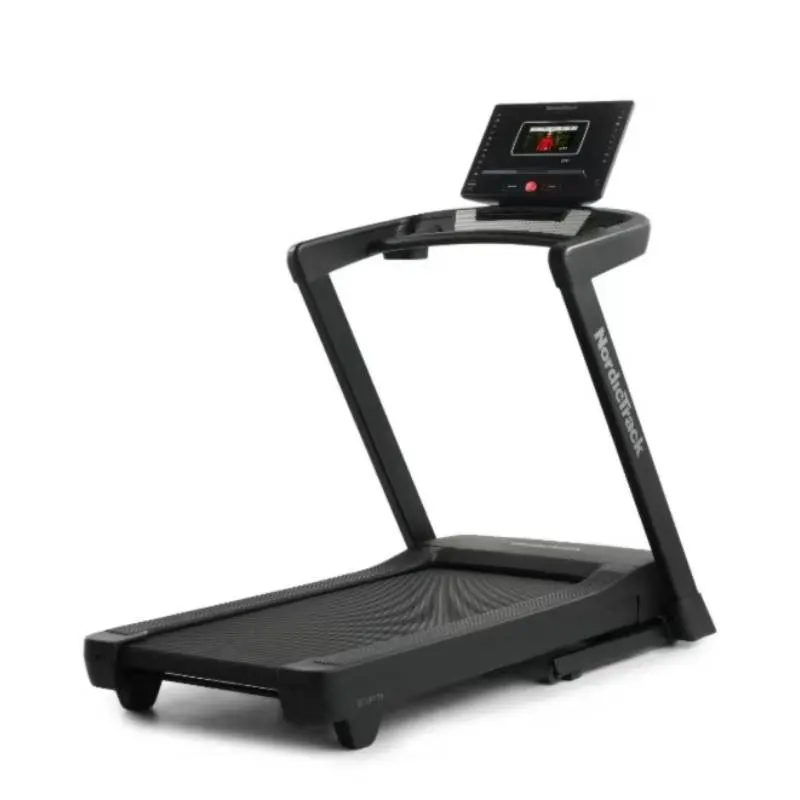
Still have questions after reading our article? Unlock your full potential by engaging with our experts and community! Don’t hesitate — leave a comment below and Ihor Shymechko will provide a personalized answer and insights to help you reach your goals.